2024 Camino del Norte

After spending 2 days in Santiago, we were ready to continue our way back home via the Camino del Norte. Most info about this camino is saying the same, one of the most beautiful routes but also one of the most difficult.
From the website of the Flemish Compostela association, we retrieved the bicycle gps track with different options, covering the main track suitable for hikers and MTB bikes and variations more suitable for touring bikes.
When downloading routes, please be aware that these routes are always in the direction of Compostela. When doing it like us, going backwards, you will encounter several one-way roads where you need to find an alternative or just like us, be carefull and cycle on the footpath or aside the road.


To get an idea of average distances per day, we checked websites of organised tours and found some suggestions.
These organisations always look at availability of hotels and elevation levels so this would be a good start.
The difficulty of the route is mainly the challenging terrain when taking the MTB track and the numerous ascents and descents along the rugged northern coast of Spain.
Our route was 833 km with a total elevation gain of about 14.500 meters, which is really still very much OK.
Santiago de Compostela


Early in the morning, we first cycled to the Praza do Obradoiro, the square which is the end point for all Pilgrims on the Camino.
As we are now doing the Camino del Norte in reverse, it seems obvious that this is our start point.
There are not a lot of people yet. Too early for the leisure tourists still having their breakfasts somewhere. Far too early for the pilgrims who are now walking or cycling the very last day of their Camino.

In 2023, there were about 450.000 pilgrims who registered as arriving Pilgrim. According to a survey by the university of Coruña, there are another 200.000 just like us, who do not carry a Credential, a little official booklet in which they collect "Sello". These are stamps from the places where they have passed to prove that they walked or cycled the Camino. To get your "Compostela", you need to have at least 2 stamps for every 100 km.
Santiago to Gijon

This is a totally different experience. While the Camino Portugues is the 2nd most walked Camino with 30% of all Pilgrims, we cycled it in the direction of Santiago. That means that we would pass small groups of hikers a few times during the day depending when and where they started walking. First batch would always be between 8 and 10am, second batch (those who started the day further away) between lunch time and 2pm. The Camino hikers usually start early in the morning so that they arrive at the next albergue early in the afternoon.
Now, cycling against the flow, was a totally different ball game. Between Santiago and Arzua, all Camino's, except for the Portugues, come together on a single track. Everyone greets you with a "Buen Camino", and we respond with "Buen Camino", it really means that we've said this thousands of times on the first day of our Camino Del Norte.


Anyhow, we survived the first day without bumping in to any of the very much excited Pilgrims on their last stretch.
Time for our first ice cream since we left from Lisbon and also time for our first camping.




Camping is nice but it looks like there are not many campsites between Santiago and Gijon. Also the price for a campsite (including electricity for charging our stuff) is between 25 and 30 euro. The cost for a hostel with private bathroom is between 45 and 60 euro.

As soon as we left Arzua behind us, it's just the Camino del Norte we're on and it immediately becomes very quiet. The area is also far less populated and when we see all these houses with closed shutters and a sign "Se Vende", we think of the time years ago that we were looking for a holiday house in the South of Europe. So lucky that we did not find anything to our liking as the soaring temperatures during the summer months would have been too much for us.


Less than 5 % of all pilgrims are walking or cycling the Camino del Norte, on the entire trip of over 800km, we've not seen anyone doing it backwards, like us. As such, we were a rarety and people tend to stop and have a talk with you. We've met people from all over the world and it's amazing from how far they come, Australia, Canada, the US ...
Every day, Alya from Ukraine gives a sticker to people she's meeitng on the Camino and today it was for us.


We found a campsite on the Camino which was open as per their website. When we arrived, we only saw workers painting the building and repairing fences. "Camping Cerrado" (closed)
Plan B : 1km back, we saw 1 big hotel and 1 restaurant with "habitaciones". Cycling back, the hotel was only open for drinks, no rooms.
On the other side of the road, the restaurant opened at 9pm and also no "habitaciones".
Plan C : Continue to the next village 7 km down the road. At Hostal KM101, they just received a cancellation and we took the last room. Yes, we're already 101 km from Compostela.
No Plan D "wild camping" needed.

A very characteristic building which you see everywhere in the northwest of the Iberian northwest countryside are Horreos. They are graneries build in wood or stone , raised from the ground by pillars ending in flat staddle stones to keep water and rodents out.
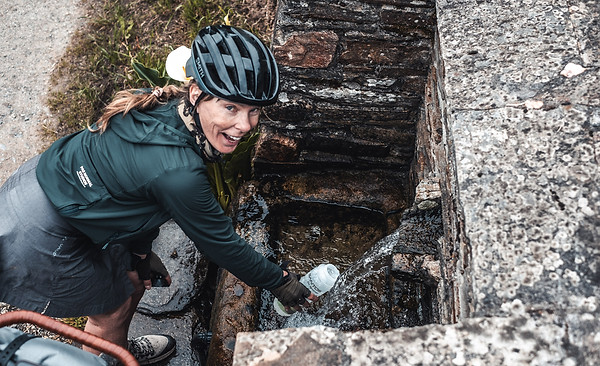

First time we see a water fountain, time to fill up with fresh water.


A new item for our packing list: spare screws for cleats.
Dirk is cycling with clip-in cycling sandels. Suddenly, he could not release one sandal anymore from the pedal. One of the screws of the cleat was gone.
In the next town, Villalba, there's a bicycle shop. No, there used to be a bicycle shop.
Asking for help in an outdoor shop, we are referred to Motos El Turin and yes, Ramon obviously throws nothing away and the right screw was found in 1 minute.


Cooler weather snack:
Bocadillo con tortilla and
ColaCao, the Spanish hot chocolate.

Being on the Camino del Norte for 3 days now, we're getting used to making choices between the Hiker/MTB track and the variations for touring bikes. We start recognising on the map where the track goes via gravel roads, forest paths or hiking/MTB paths only.



We're just making sure that we have a nice mix between different types of roads. In the afternoon, we always decide where we will try to stop for the day. Depending the distance still to cover, we decide on a slow or fast road.




Towards the end of day 4, we reach the coast and we're crossing the rio de Ribadeiro from Galicia in to Asturia over a bridge which seems to be made for our Santos bikes.


It's our intention to cycle for another 25 km but suddenly after 3 km, we arrive at an amazing beach, the playa de Penarronda, with on top of the cliff, a hotel/restaurant. We check the price for a room in booking.com, 60 euro for a room with seaview. Well, we will at least have a coffee. When we ask in the hotel for the price of a room, the lady asks us if we are Perigrino .... Yes ..... For Perigrino, it's 45 euro for a night. OK


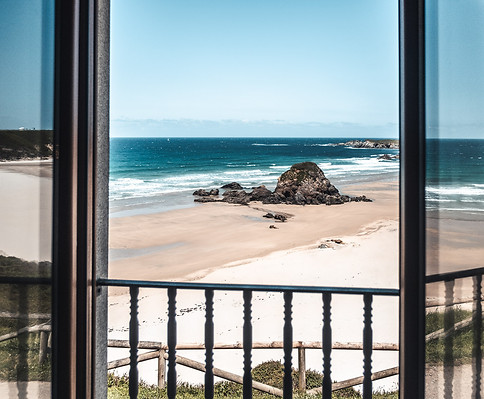



As we stopped early yesterday, it's now still a little more than 150 km to Gijon. According the Compostela website, the average recommended distance along the coast here is 60 km. We'll see where we end up today. The route never goes far away from the coast and we start going up and down.

Looking for a place to sleep, the best option this evening is a campsite in a small village about 1 km from the Camino. There also seem to be some restaurants close by so it's all perfect. Approaching the campsite, we notice that all restaurants are closed, on top of it, Dirk is having a flat tire about 500 meters before the campsite.
Hooray, hooray, ... the last option for a restaurant, which is on the campsite, is open.
Saved again.



This part of the Camino, you're also seeing a lot of bridges, but you are nearly never using then. By bicycle, you are going down the hill and up the mountain. Good for the physical condition.





Gijon


Asturian cider or "Sidra" is the most popular drink in this region and Gijón hosts the annual Festival de la Sidra Natural.
Asturian cider is typically dry with a natural unfiltered appearance and is served in the many Sidrerias all over town.
The traditional pouring method is holding the bottle high above the head and a wide glass below, often splashing some cider in the process. Main purpose is to aerate it and enhance the flavours.
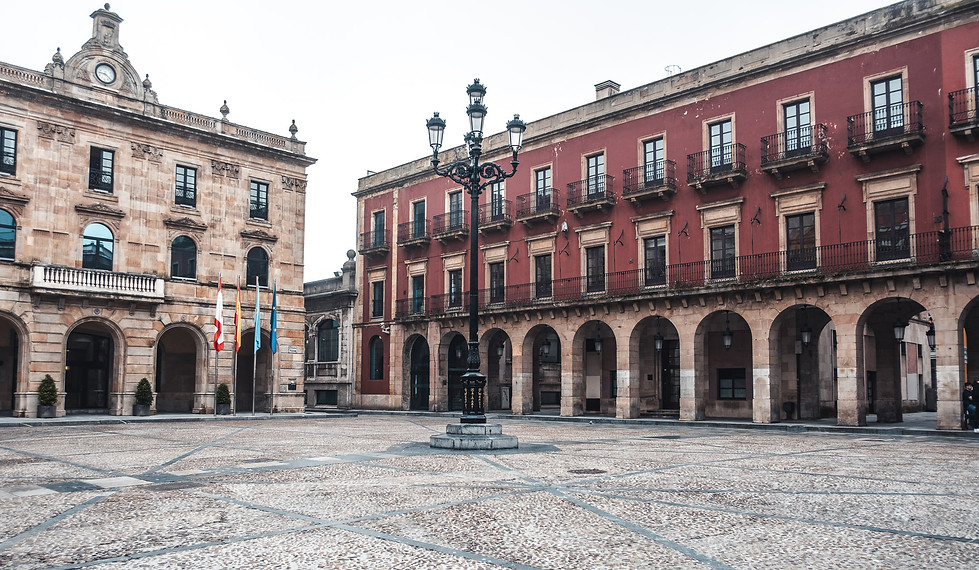
In Gijon, we took our first day of rest since we left Compostela, 350 km ago.
Whenever we stay somewhere for 2 nights, we try to have a studio or small apartment because we (mainly Dirk) than have more space to spread out all our stuff, do some laundry, etc...




Cimavilla is the charming old town of Gijon, with narrow streets and lively squares with many sidrerias.
A little bit further is Santa Catalina Hill with an enormous concrete sculpture, "Elogio del Horizonte".

Walking further east, you start walking alongside the Playa de San Lorenze towards the mouth of the Rio Piles where you find a little further along the river the Museu Pueblu d'Asturias. Musea in Gijon all have free entrance.

The Museu Pueblu d'Asturias is dedicated to preserving the traditional culture and way of life of the people of Asturias.
There are exhibitions with traditional Asturian architecture, photographs, musical instruments, tools, furniture and clothing over the years.
While you can do certain parts of the museum during a short visit, it's really worthwhile to spend more time. It took us about 3 hours to do the entire walk through.










A good place for coffee, cakes and breakfast : Catlove



Gijon to Santander

The first 50 km after Gijon, we're leaving the coastline with the big advantage that we are now kind of sheltered from the wind.
But, .... today, there is trouble in the air. When we left the hotel this morning, Linda's rear brake was not working anymore. When she pulled the break lever, nothing happened. Dirk had the same a few days ago after a flat tire when the bike was upside down for awhile. On Dirk's bike, pulling the lever a few times was the solution but this time on Linda's bike, nothing worked. The closest bicycle shop was 30 km further and we decided this was the better option over returning to Gijon.

Few km's further, another flat tire for Dirk. Normally not an issue but this time, it means we will not be able to get to the bicycle shop for Linda's bike before it closes down for lunch (and siesta).
Grrrr.

We arrive in Villaviciosa after closing time and decide to take it easy.
We'll just have our lunch on the bench in front of the church and go for a drink.
Cueto'sBike opens again at 4pm so we'r not going to be able to continue cycling today.
As we said before, today is not the best day. Dirk left his cycle gloves behind where we had our lunch and when we go back after our drinks, they're of course gone.


When we arrive back at Cueto'sBike, we see that they also sell our Hope brakes and we start feeling better, there is hope for our Hope brakes. After 20 minutes, it's all done.
The explanation was simple, not enough oil in the lever chamber. If you put your bike upside down (when repairing a flat tire) of when you hold the bike vertical (like we did taking the bikes in an elevator), there are pockets of air which are going from the lever chamber into the brake hose and this causes the brake to malfunction.
Oeps, Dirk is happy he did not do the last maintenance.

We're first cycling along the Rio de la Ria and a large area of wetlands of which we assume are overflowing with high tide.

A quick check on Dirk's brakes was also done yesterday so we are now both again ready to go strong. It's another 175 km to Santander where we have our next rest day. Probably too much for 2 days so we aim for 3.


Oh No, it's not all flat today.

After 65 km, we started looking for a campsite or hostel and we bumped in to "The Old Seaman". Juan made us a nice pizza for dinner and we also tasted the homemade sidra.





Juan told us the weather in this part of Asturias is often overcast and rainy, mainly because it's geographical location between the Atlantic and the mountains of the Picos de Europa.
Most of the day, we experienced light rain and fog but the views were just magnificent.
Todays plan is to reach Santillana del Mar, a must see and must stop according to Juan.

We're now in the province of Cantabria and when we reach San Vincente de la Barquera, it just looks like we are now coming in a more touristic area.



The Palacio de Sobrellano in Comillas was built in the late 19th century. The design was from a Catalan architect and much of the inside was designed by Antoni Gaudi, making it one of the few buildings outside Catalonia featuring works by Gaudi and other Catalan modernists.

Santillana del Mar is often referred to as one of the most beautiful villages in Spain. It's famous for its cobblestone streets, stone buildings and preserved medieval architecture. It's also the ideal stop for visiting the nearby Altimara Caves (for which we need to come back - again).
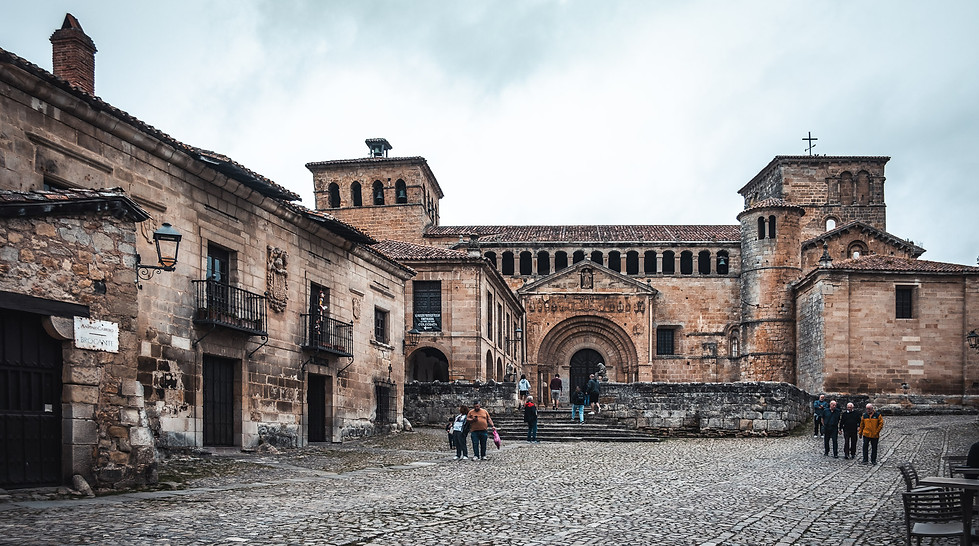

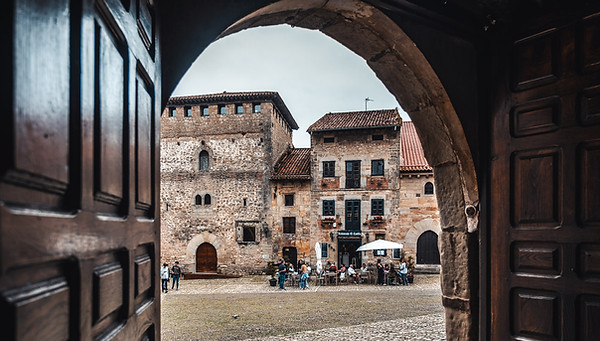



After having a Quesada for breakfast in Santillana, we just had to cycle another 42 km to Santander.
When we started bike touring, we used to plan a restday every 3 to 4 days.
Now, we only take a day off from cycling when we arrive in a place worthwhile to stay longer, like a mini citytrip within our cycle trip.
This can be after 7 days of cycling or just 1 day.


Santander

Santander is the capital of the autonomous community of Cantabria. The city is along the coast of the Bay of Biscay and has an oceanic climate with more rainfall than many other parts of Spain. And yes, we had the rain.

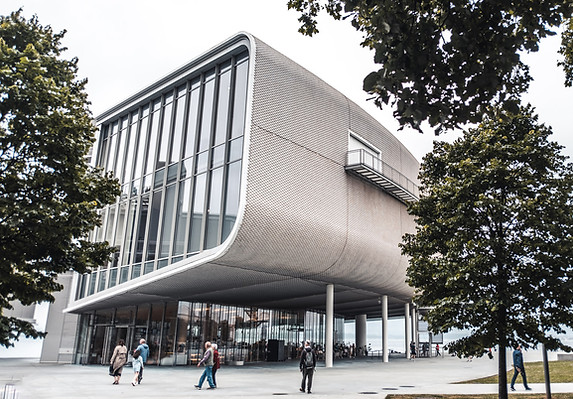
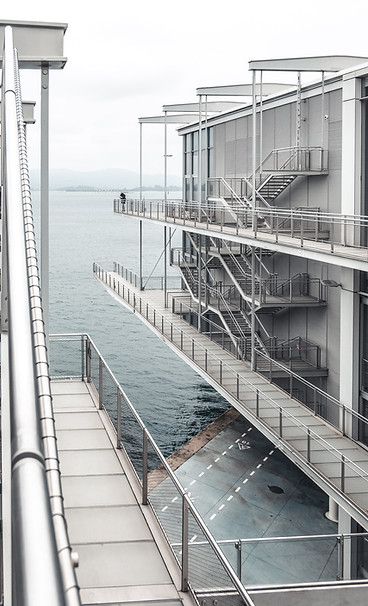


The Centro Botin on the waterfront of Santander is one of the most prominent cultural and arts center of the city.
Walking to the east, direction the Magdalena peninsula, you are first passing the Gamazo drydocks.
These drydocks were build abt 125 years ago as large basins which could be flooded to allow ships to enter.

Continuing your walk via the Parque de Gamazo, you're reaching the Playa de la Magdalena and Playa de Bikinis where and you can walk up to the Palacio de la Magdalena, originally designed as the summer palace for the Spanish royal family.





A good place for breakfast: Hoóponopono Santander for a delicious Acai bowl.



A good place for a perfect and cheap vegetarian lunch: La Parada de San Martin.


We left Santander by ferry, crossing the Bay of Santander, to Somo, known for it's long sandy beaches and surfing opportunities. The ferry ride takes about 20 minutes and runs at least every 30 minutes.

Santander to Bilbao

As we usually stay a full day in a must visit city, this stretch from Santander to Bilbao is probably the shortest between "days without cycling". With just about 115 km between the 2 cities, it's a little bit too long for doing it in 1 day, so it will be 2 leisurely days.



After 35 km's, we arrive in Santona where we have the option to cycle around the Bay of Santona, or we can take a small ferry to El Puntal.
Looking at the Barca de Puntal arriving in the harbour, with just a few people on it, taking the barca looks like the most adventureous option.
It's low tide and from pictures on the internet, we have seen that on the other side, you are embarking or disembarking directly on the beach.
Certainly looks good on the photos.

After an easy ride along the coast with just a few climbs up to 150 m, we arrive in Castro Urdiales.
To find a hotel, we always first check which hotels are in the neighbourhood with Booking.com.
Afterwards, we check these hotel's direct websites for special deals and that's how we discovered that B&B hotels applies a flat price of 50 Euro for new hotels during the first 3 months of operation. You just need to become a member, which is free.
Guess where we stayed.


The part after Castro Urdiales upto Zierbena Biskaye is probably the most scenic part of the Camino del Norte. You're cycling on a bicycle path along the cliffs with fantastic views of the ocean.
Unfortunately, it seems to be one of these days with frequent rain showers.






When arriving at the Playa de la Arena, you're leaving Cantabria.
After our picnic with a view of the beach, we had a coffee in La Mala Juana where one of the guests told us, the other side of the beach is Spain, you are now in Basque Country.


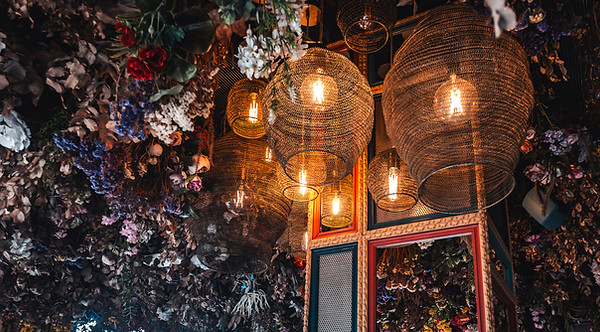
Starting in Zarbiena, the last 25 km are on a dedicated cycle path right in to the centre of Bilbao.
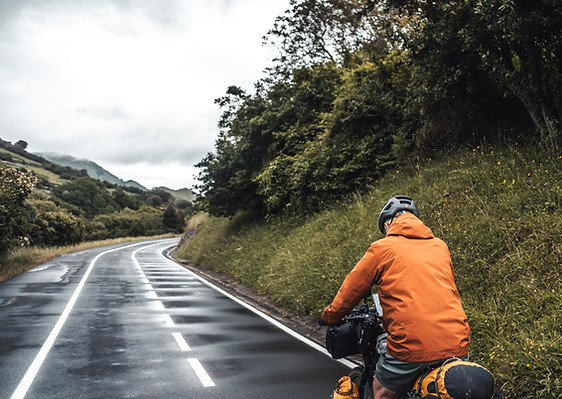
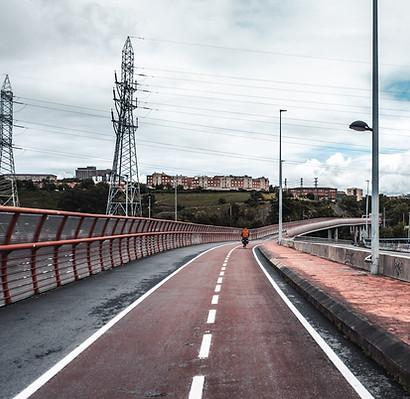
Bilbao

The Bilbao Guggenheim museum is one of the most celebrated contemporary art museums in the world.
The museum is known for it's unique and iconic design and opened it's doors in 1997.
In front of the Museum is "Puppy", a 12 meter tall sculpture made up of steel covered with thousands of live flowers. The frame is filled with soil and an irrigation system to maintain the health of the flowers, which are also changed every season.


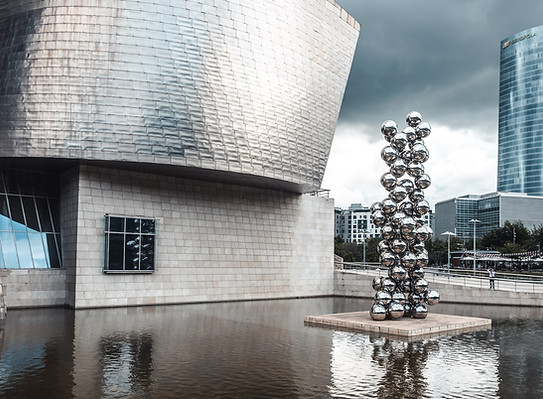


Just a stroll away from the museum is the Doña Casilda Iturrizar Park, which was for a long time the only green space in Bilbao.

On the other side of the Nervión river is the Casco Viejo, the historical center of the city. The Plaza Nueva is a large neoclassical square, dating from the 19th century, with many bars and restaurants specializing in pintxos, the Basque style tapas.



At the core of the Casco Viejo are the Siete Calles (Seven streets), now all pedestrian friendly and lined with traditional Basque buildings, shops, bars and restaurants.

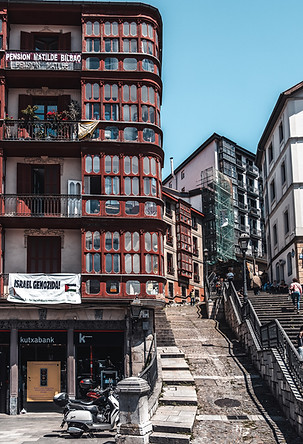


We're leaving Bilbao via the river to our last stop on the Camino del Norte with a last view of the Guggenheim.

Bilbao to San Sebastian



The last etappe of the Camino del Norte feels a little different, mainly because we know that it's just another 2 days to San Sebastian and we will also have enough time left to cycle the entire way back home. Not sure yet which route we will take after San Sebastian but we'll be back home before the 15th of july anyhow.
Time to stop and have a refreshing ice cream.


The first 75 km up to Ondarroa are away from the coast line and there are no flats. It's up or down.
We feel that the 4 weeks we're on the bike now have made us stronger.
We have a gearbox with 18 steps and we would normally always cycle in gear 12 on flat surface. Now, we do this in gear 14 with the same effort.
Going uphill, we're still very often in the smallest gear but it seems to go smoother.

Arriving in Ondarroa, we were in for a surprise. It's a busy coastal town without hotels, hostels or any other place where you can stay. We asked around, nothing. Still, the streets were full of people.
We were lucky to find 1 B&B just outside the town, up the hill.
Walking back to the town later in the evening for food, another strange thing.
Lots of people drinking in bars but no restaurants. After asking around, found just one small bar also serving food up to 9 pm.
Is this still Spain?




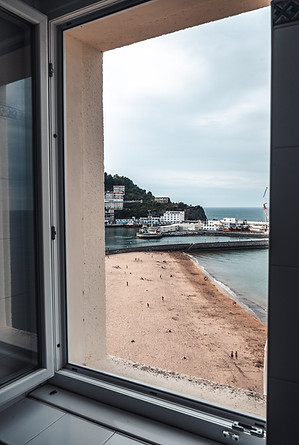
Our last day on the Camino del Norte, we for sure understand why this Camino is considered the most scenic of all of them. Not because we have done the other Camino's, but because it's going to be difficult to beat the views we're having day after day.



Halfway between Ondarroa and San Sebastian is Getaria, a must stop place for a quick snack or coffee.
Getaria is famous for its production of Txakoli, a light sparkling white wine.
Unfortunately, we still had a climb of 350 meters in front of us before reaching San Sebastian. Tasting will be for another visit.
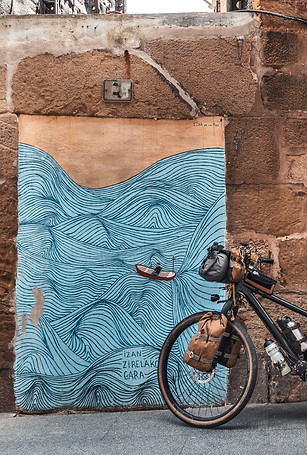
Up, up, up, up

Down, down, down, down
and there it is, San Sebastian in spanish, Donastio in Basque language.
Here we will spend 2 nights before doing the last 25 km to Irun, the official start point of the Camino del Norte.


San Sebastian

Oops .... Trying to find a lodging in the city center of San Sebastian at a reasonable price was impossible. It's known for being one of the most expensive cities in Spain.
We finally decided to book a room in the Olarain, a student's residence on the campus of the Basque Country University.
It's about 1 km from the end of Ondarreta beach and another 3 km from the old city alongside the beach.



San Sebastian attracts a large number of tourists thoughout the year and also has the highest concentration of Michelin-starred restaurants in the world.
The Parte Vieja (old town) dates back to medieval times and was rebuilt after a fire in 1813 during the Peninsular war.
The main square, the Plaza de la Constitutión, historically was used for bullfights.



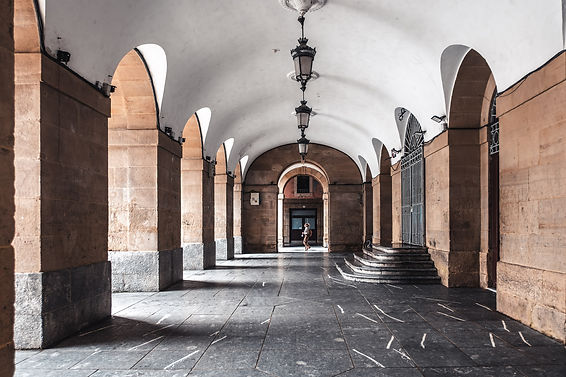

If you like taking photographs without too many people on it, Spain is an easy country to do this.
Most people are not "morning people", most of the shops only open after 11AM and night live is the standard.

The Parte Vieja is located at the base of Monte Urgull and a walking trail leads you to the top of the hill from where you have the best panoramic views of the city. At the top stands the Castillo de la Mota, a fortress of the 12th century and a large statue of Christ, Sagrado Corazón.


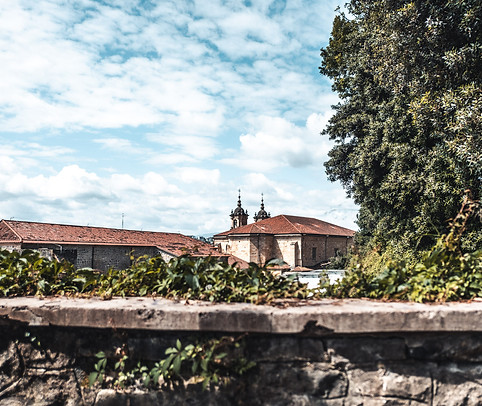





A good place for Pinxtos : Casa Vergara 1948 just across the Basilica de Santa Maria





A good place for coffee and cheesecake : BASSK cheesecakers, also available at The Loaf bakeries



San Sebastian to Irun

From San Sebastian to France, it's just 25 km and we are taking the fast bicycle route, skipping the mountain. We want to camp this evening in Saint Jean de Luz. That's where we find the first "Camping Municipal", always the best value for money when camping in France.




This route was the 2nd part of our 2024 cycle trip from Lisbon back home.
For having a look at part 1 "Camino Portugues" or part 3 "Hendaye to Halle", go to the menu under Related

